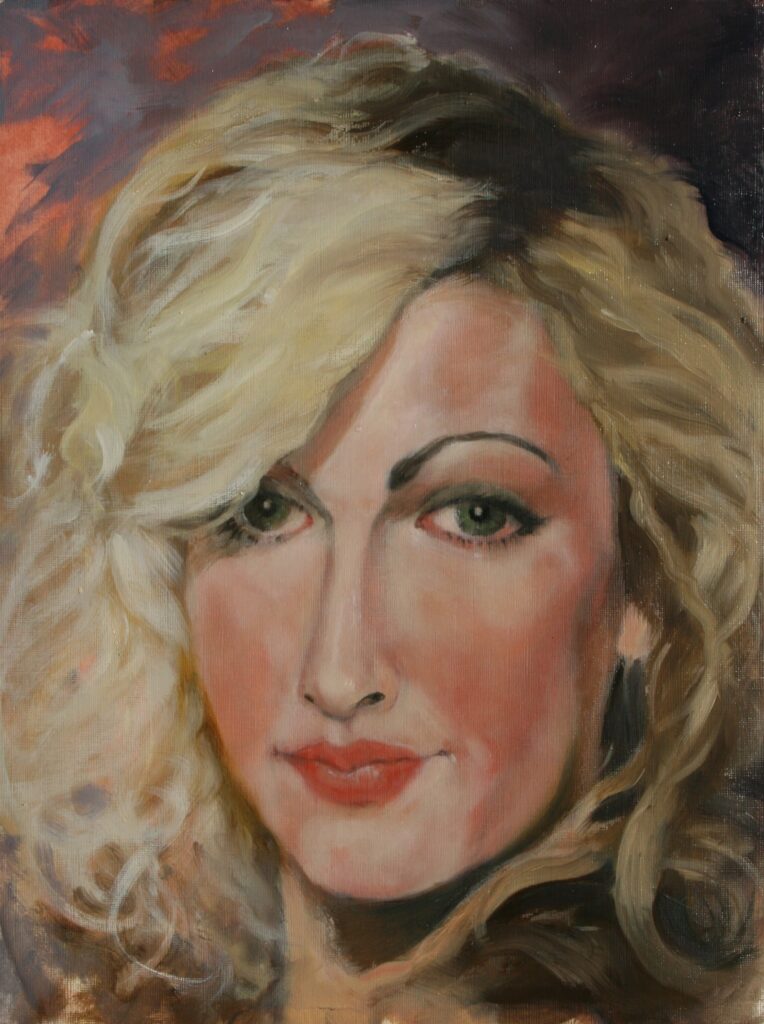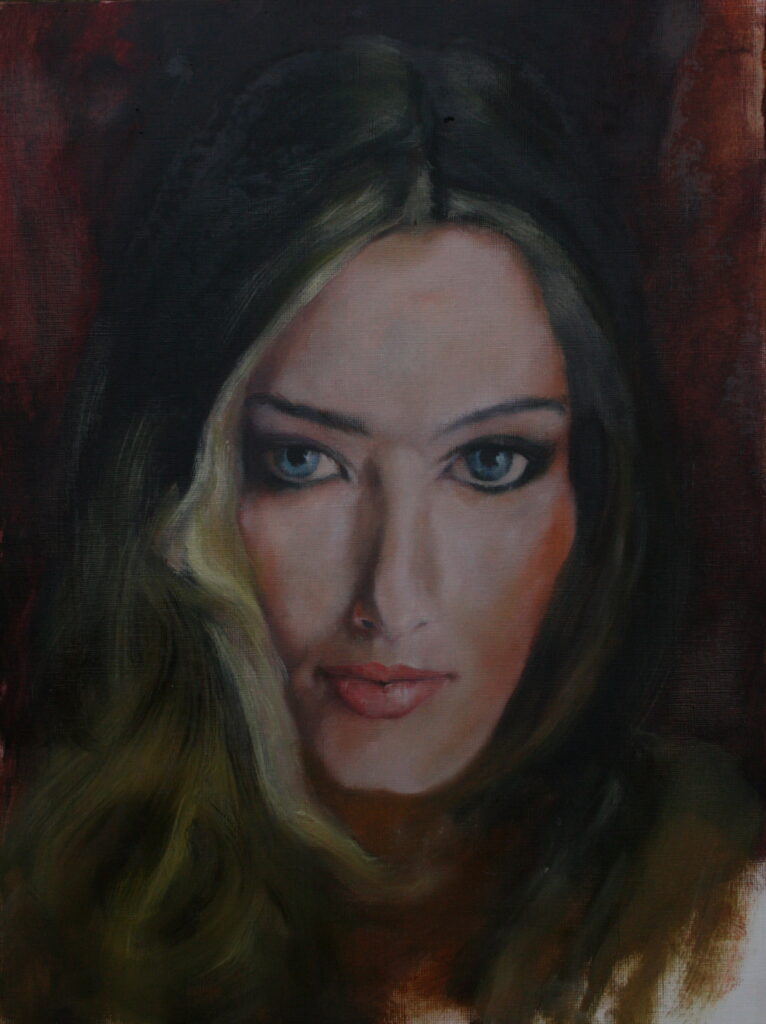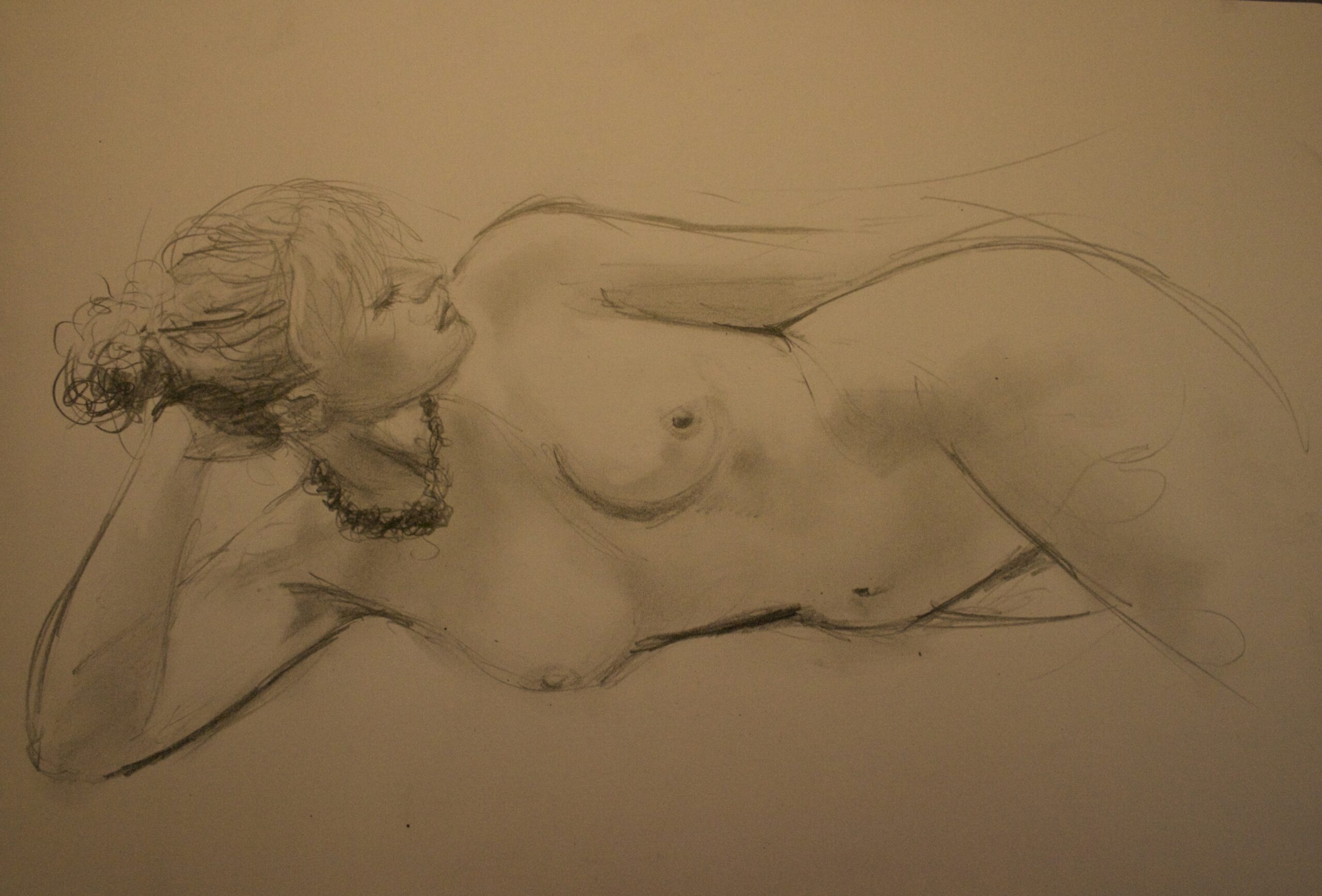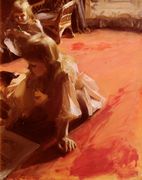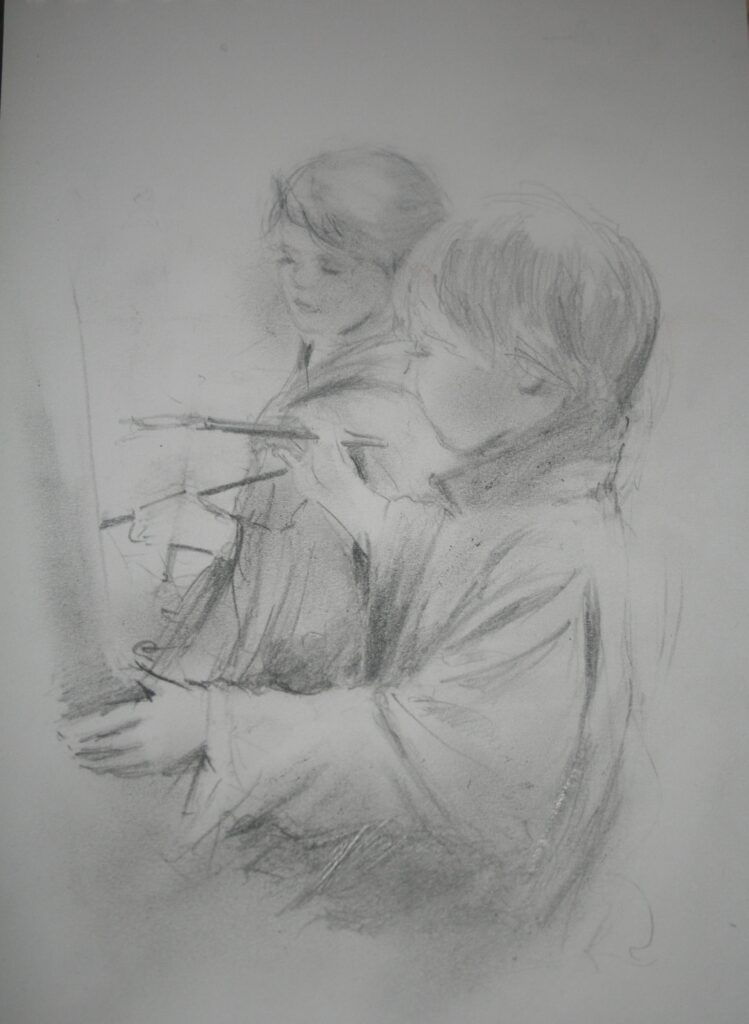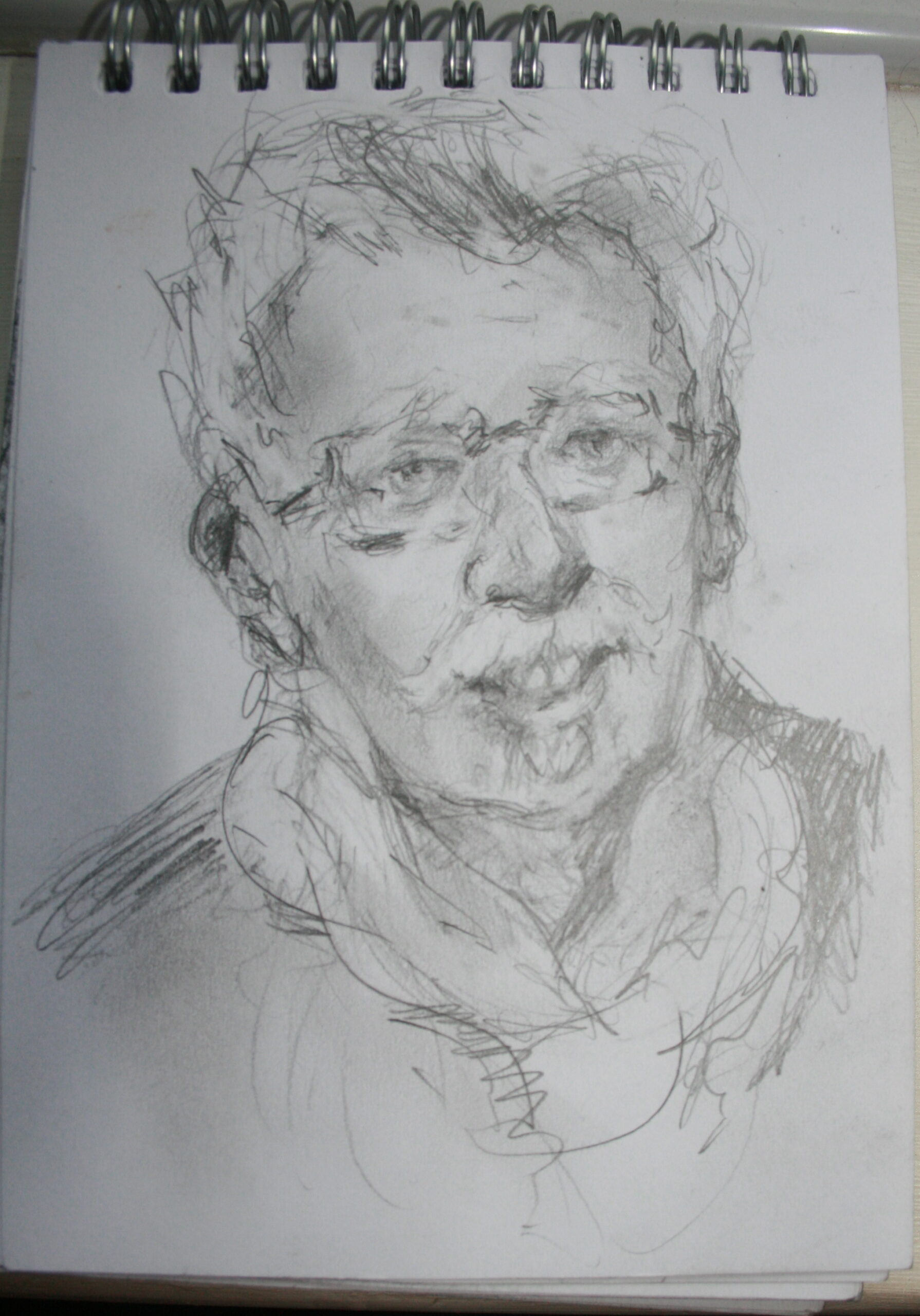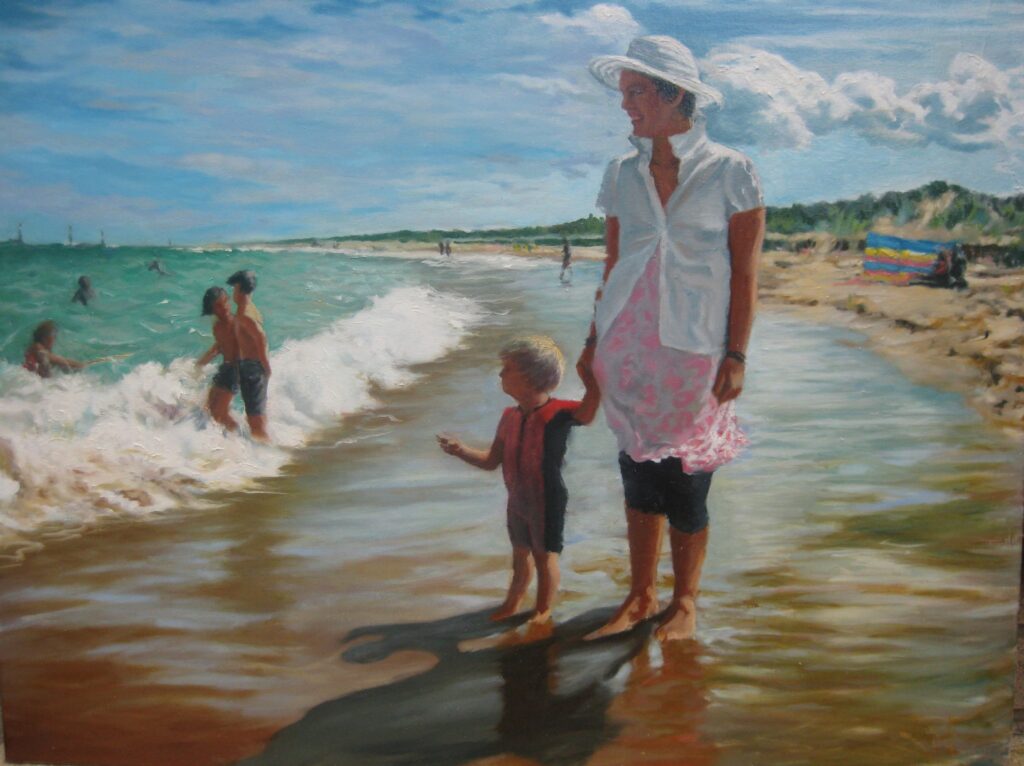I have just completed a couple of oil studies based on photos for ease of reference. The purpose was to try and focus on building a painting in tonal stages as set out below.
Dividing the value range from say black to white in terms of 10 tonal values I started with a value 4 background/ground comprising the main colours I’ll use in the portrait…
I then painted in the shadow areas in no darker than a 7. The darkest areas, say a 9, were then imposed upon that. The areas where the light falls were then blocked in in say a 2 or 3 (saving the 1 for the highlights) …
The hard work is in choosing the right colour temperature and of course values in that 4 – 7 range and closing in on the detail.
I always try to work wet in wet in the manner taught by Carolus-Duran to Sargent. See James Gurney’s really informative post on this. I’ve always had to guess though and it’s a matter of extrapolating from the few gems handed down there; “the truth in painting lies in the halftone of every plane” and the like…
The above “number” method, however, is set out by the fabulous young artist Louis Smith. He betrays a love of Sargent and I wonder if his approach isn’t basically an exposition of the same Carolus-Duran method. Sargent basically says abbreviate every plane to its midtone, build from those midtones and finish with the darkest darks and lightest lights. Whilst the “number” method goes to dark tones and light very early it still reserves the extreme tones for later on.
His work is well worth checking out as well as his demonstrations on the site to which the above paintings were indebted by way of technique. He is one of the very best out there at the moment in my view.
